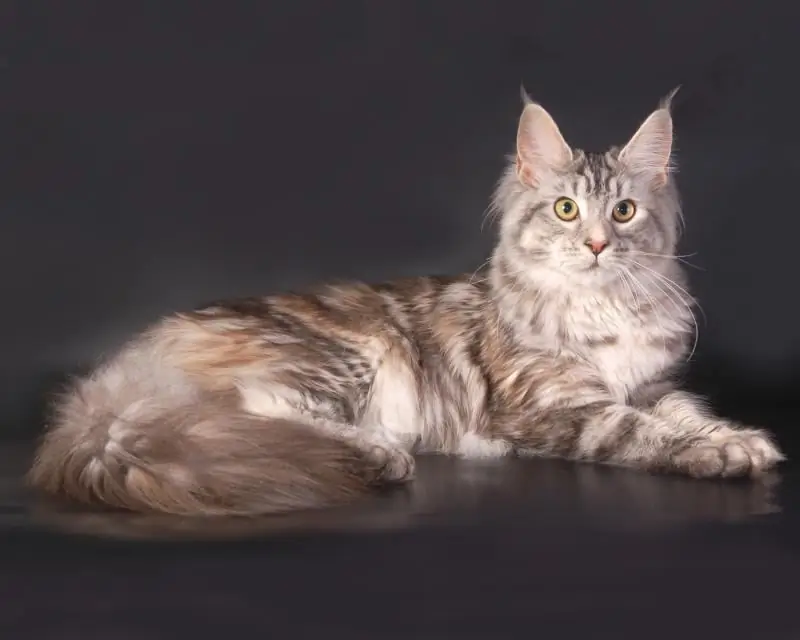
Table of contents:
- Author Bailey Albertson [email protected].
- Public 2023-12-17 12:53.
- Last modified 2025-06-01 07:32.
What to feed Maine Coon

Maine Coon is a popular cat breed that is large (males weigh up to 8 kg) and a characteristic lynx-like appearance. Pets, like other animals, get their nutrients from food, so it is important to make the right menu. Failure to follow the rules of feeding increases the risk of developing destructive pathologies and the formation of calculi in the kidneys.
Content
- 1 Features of the Maine Coon breed
-
2 Kitten menu
-
2.1 First month
2.1.1 Table: Individual feed rate for Maine Coons
- 2.2 1 to 6 months
- 2.3 From 6 months to 1 year
-
-
3 Menu for adult Maine Coons
- 3.1 Natural products
- 3.2 Wet food
- 3.3 Dry food
-
4 Review of popular ready-to-eat foods suitable for Maine Coons
- 4.1 Wellness Core Original
- 4.2 Bosch Sanabelle Grande
- 4.3 Eukanuba Adult Top Condition
- 4.4 Pronature Adult Original 28
- 4.5 Hill's Nature's Best Feline Adult Chicken
- 5 Veterinarian recommendations
- 6 Reviews of Maine Coon owners and veterinarians
Maine Coon breed features
The main feature of Maine Coons that should be considered when choosing dry food and products is size. Due to the increased body weight, the load on the joints of the animal increases. This can lead to cartilage degeneration and the development of arthritis in old age. To prevent deformation of the joints and maintain normal mobility, it is recommended to introduce supplements with glucosamine and chondroitin in the menu or to prefer dry food with these substances in the composition.
Sometimes Maine Coons have spinal muscular dystrophy. Pathology develops due to a genetic predisposition, so the only guaranteed way to avoid health problems is to purchase a kitten from responsible breeders who remove sick animals from breeding. You can alleviate the condition of such pets by increasing the proportion of protein in the diet. Amino acids are essential for the restoration of the muscle corset. Before changing the menu, it is recommended to undergo an examination and consult a doctor. Self-correction of the diet can lead to a deficiency of nutrients obtained from plant sources and the development of other diseases.
Other potential diseases are common to other breeds and humans, so healthy Maine Coons do not need a special diet. It is important to avoid overeating: obesity dramatically increases the stress on the joints. Some breeders believe that Maine Coons are more likely to develop gingivitis and urolithiasis than other cats. My Maine Coon once had gingivitis, but this condition is generally a common problem for pets. No statistics available. If necessary, for prevention, you can give dry food with therapeutic additives (berries and fruits) to control the level of urine acidity.
Kitten menu
The rules for compiling a menu for kittens depends on the age of the animals. At first, pets feed only on mother's milk, then they are gradually transferred to adult food.
First month
Up to 3-4 weeks, the kitten should feed exclusively on breast milk. If for some reason the cat cannot feed the babies, it is recommended to purchase special substitutes. The most popular products of this type are Beaphar Kitty Milk and Babycat Milk Royal Canin. In them, the proportion of milk sugar is minimized, therefore, the likelihood of developing individual intolerance and diarrhea decreases.

Substitutes are better than cow's milk due to the adapted composition: the concentration of lactose in them is lower, which makes them safer
In extreme cases, feeding with mixtures based on cow's milk is allowed. Due to the high proportion of lactose in the product, the kitten may develop diarrhea. If diarrhea develops, it is important to see a veterinarian quickly, as as a result of fluid loss, babies quickly become dehydrated.
A universal mixture is prepared from 500 ml of milk, 1 raw egg yolk and 2 tbsp. l. Sahara. To enrich the product with useful substances, you can add 1 tsp. corn oil and the contents of 1-2 capsules of vitamin E. Weakened kittens are given a mixture of 100 ml of milk (3.2% fat), 1 chicken yolk and 20 ml of 5% glucose solution. In case of problems with digestion, add the probiotic Vetom 1.1 at the tip of a knife.

Egg Blend Helps Increase Fat, B Vitamins and Minerals
In small kittens, the thermoregulation system is not fully formed, so it is important to warm up the mixture. In 1 week the liquid temperature should be + 38 … + 39 ° C. In the second week, the mixture is heated to + 30 … + 32 ° C. Later, the temperature is lowered to + 28 … + 30 ° C. By the fourth week, the mixture is heated only to + 24 … + 26 ° C.
Diluted milk should be stored in the refrigerator for no more than a day. It is recommended to prepare a new batch before each meal.
The amount of food and the frequency of feeding depends on the age and weight of the kitten.
Table: individual feed rate for Maine Coons
| A week | Amount of food | Schedule and features |
| The first | From 1 to 4 days 30 ml per 100 g of weight | In the first 2 days, kittens are fed every 2 hours, including at night. From day 3, the break between night snacks is increased to 3 hours. From day 5, kittens are fed every 4 hours. |
| The second | From 5 to 13 days 38 ml per 100 g of body weight | Kittens are fed every 4 hours. From day 15, complementary foods are allowed. At the same time, it is recommended to gradually accustom the animals to bowls and saucers. First, you can give your pets to lap from spoons. |
| Third | From 14 to 24 days 46 ml per 100 g of body weight | The frequency of meals is the same. |
| Fourth | From day 24 53 ml per 100 g body weight | Kittens are fed every 4 hours. From 3-4 weeks, other products must be introduced into the menu. |
1 to 6 months
Complementary foods are introduced into the diet in order to switch to adult food. The changes should be implemented gradually. Kittens have very sensitive digestion, so a sharp transition can provoke diarrhea and the development of pancreatitis. As the first complementary food, you can use baby cottage cheese without additives. It is allowed to give it every day.

The classic curd "Tyoma" is suitable for small kittens: it does not contain additives and has a rather soft consistency
Meat is gradually introduced into the menu. First, the animals are given a scraper - separate whole fibers. The size of the first portion should not exceed a pea; in the future, it is gradually brought to the volume of a chicken egg. The meat is given raw, but it is first frozen well. This is necessary to eliminate potential pathogens and parasites. Meat is given every day. Chicken, turkey and beef are suitable for complementary foods.
As a complementary food, you can use oatmeal without additives. It must be liquid, otherwise constipation may develop. It is allowed to cook porridge with milk. After getting used to the meat once a week, you can offer the kittens lean sea fish. Cod, capelin, hake and pollock are good options. 1-2 times a week, the animals are given chicken yolk and soft unsalted cheese.

Oatmeal is used as a source of fiber, but it should not be the basis of the diet: it does not contain animal proteins, which are needed for the final formation of internal organs
Kittens are taught to vegetables from childhood. Zucchini, broccoli, cauliflower and carrots can be fed from 3-4 weeks. Animals rarely eat raw vegetables, so it is recommended to boil the food, chop it with a blender or grater and mix it with the meat.
New products are introduced into the menu gradually, 1 every 1-2 days. This is associated not only with the risk of digestive disorders, but also with the likelihood of developing allergies.
Up to 6 weeks, complementary foods should have a liquid consistency. Then the pet is gradually transferred to solid food and cereals are abandoned. The process should be completed in 3 months, because at this time the change of teeth begins. To form the correct bite, the kitten must chew solid foods. From 6-8 weeks, the pet can begin to transfer from natural food to ready-made wet or dry rations. In the latter case, the granules are first soaked.

The granules must be soaked only with warm water, otherwise the process will take 30-40 minutes.
When feeding with natural products, the average rate is 150 g of food per 1 kg of kitten weight. In the case of ready-made rations, it is advisable to follow the manufacturer's recommendations and observe the animal's physique. Kittens are not able to independently regulate the size of portions, therefore, to prevent overeating, the daily allowance is divided into 5-6 parts. After 3 months, kittens can be fed 3-4 times a day.
It is not recommended to feed kittens with adult food. It contains less fat, calories, vitamins (A, group B, E) and minerals (calcium, magnesium, potassium, etc.), which can lead to malformation of internal organs and systems. Although I personally gave my kitten a holistic-class Grandorf food and there were no problems. But this is possibly due to the versatility of the formula and its closeness to the natural diet.
6 months to 1 year
Grown up kittens are fed in the same way as at 3-4 months, but transferred to three meals a day. With a natural menu, 80-85% of the diet should be meat products. Kittens need a lot of protein to build muscle fibers. Dishes are not chopped as thoroughly as before. The animals are given harder parts: cartilage, hearts, lungs, etc.

Kitten food pellets must be round, otherwise the animal will be in pain, which will provoke refusal to eat
When eating ready-made rations, the menu in most cases does not change either. Manufacturers most often produce products for kittens from 2 to 12 months. Only the portion size is adjusted depending on the pet's weight and physique.
Maine Coon menu
The diet of adult animals depends on the preferences of the owners. You can feed your pets with ready-made rations or choose natural food. The latter allows flexible regulation of the list of products, which is especially important in case of health problems or a tendency to allergies. High-quality ready-made rations contain all the necessary nutrients, but their cost is often higher.
Natural products
80% of the menu is made up of meat products, the remaining 20% are additives in the form of vegetables, fermented milk products and vegetable oils. Vitamin and mineral supplements are recommended for natural nutrition, but their appropriateness and dosage should be discussed with a veterinarian.
The diet includes the following foods:
- Meat. Diet varieties are used: chicken, turkey, beef, veal, rabbit, etc. Pork is not given due to the risk of infection with helminths and high fat content. Before feeding, it is advisable to freeze the meat and boil it at least until half cooked in order to destroy viruses and larvae of worms.
- Hearts. They contain taurine and are highly recommended for cats. Animals on their own are not able to synthesize this compound, but it is necessary to maintain the condition of the eyes, heart and stomach. It is advisable to give chicken or pork hearts, since beef hearts are less digestible. The optimal proportion of offal in the total amount of meat in the menu is 30-40%.
- Liver. Contains vitamin A and a number of essential amino acids. The liver can cause diarrhea and hypervitaminosis, so it is added 1 tsp. per serving.
- Head and neck. They contain a lot of calcium and help to clean teeth. Fangs almost do not take part in the process, so plaque is removed from them separately. Heads and necks are given about 1 time per week, since they are high in calories.
-
Beef tripe and stomachs. They contain enzymes and promote the development of intestinal microflora. By-products normalize digestion, but are very high in calories, so they are given in small portions (1 tsp) up to 2 times a week.

Beef tripe The most valuable is the unpeeled dark beef tripe, as it contains more enzymes.
- Chicken cartilage, pork dimes and rooster combs. They practically do not contain useful substances and calories, but they are a valuable source of collagen. The connection is required for the formation of tissues of the musculoskeletal system and skin.
- Lung. Almost no calories and protein, but a source of phosphorus and calcium. There are many cartilaginous tissues in the lungs, so the by-product helps to maintain the health of the musculoskeletal system.
- Fish. Due to the risk of developing urolithiasis, it is given either once a week, or every day, but in a piece. The choice of diet depends on how willingly the cat eats fish. It is advisable to prefer marine fatty varieties: trout, herring, mackerel, salmon, etc. River fish are not given to cats because of the increased risk of infection with helminths.
- Dairy products. They contain B vitamins and contribute to the normal development of the central nervous system and the immune system. Fermented milk products support the digestive tract. Cats are allowed to give fermented baked milk, kefir and yogurt. Store-bought yoghurt with additives should be avoided, it is recommended to prepare the product yourself.
- Curd and cheese. Contains calcium. A cat is given no more than 15 g per day. Cottage cheese should be low-fat. It is recommended to purchase Adyghe cheese. It contains relatively little fat and salt.
- Vegetables. Allowed foods include pumpkin, squash, carrots, cauliflower, and broccoli. The share of vegetables is about 10% of the total mass. Plant foods contain fiber and aid in digestion. They can be given raw, boiled, or stewed with butter.
- Olive oil. Contains vitamins A and E as well as unsaturated fatty acids. Improves the condition of the coat and skin. Only unrefined oil is given to cats. The dosage is 1 ml per day.
- Wheat bran. Improves peristalsis and cleanses the intestines from fecal stones. For sensitive digestion, the bran can be steamed.
Cats are given brains and kidneys with care. The former contain a lot of phosphorus, which can lead to the development of urolithiasis. The kidneys are a good source of vitamin A, but they are given in limited quantities due to the risk of hypervitaminosis. With a thin physique, you can offer your pet an udder. It contains easily digestible proteins and fats, but due to the high calorie content, portions should be limited to 1 tsp.
Some owners give pets milk thistle meal to support liver health. The plant is added to food for 1 week, then a break of the same duration is taken. After 2-3 courses, a long pause (3-6 months) is maintained, then repeated. My friend managed to cure the cat's chronic flatulence. Of course, I do not encourage independent prescriptions, because bloating can accompany not only liver disease, but the symptom has disappeared.
It is not recommended to give porridge to cats. Cereals contain carbohydrates and calories, but they are poorly absorbed by the predator's body. In addition, many cereals greatly increase the load on the digestive tract. Rice can cause constipation.
It is forbidden to give cats and cats the following products:
- Food from the table. These include pickles, marinades, smoked meats, etc. Often they contain a lot of salt and fat, which negatively affects the state of the gastrointestinal tract and urinary system.
-
Fatty foods. This applies to meat and sour milk. Fat increases the load on the liver.

Milk It is advisable not to give milk to adult animals, since after 3 months many cats develop individual intolerance
- Sugar, sweets and any desserts. Part of the glucose is stored by the animal's liver in the form of glycogen. The rest enters the bloodstream along with toxins. This leads to the appearance of allergic reactions: watery eyes, itching, hair loss, etc.
- Sugar substitutes. Most act as a toxin on the feline body. For example, xylitol is a hazard.
- Alcohol. It causes the destruction of nerve fibers, increases the load on the heart muscle and irritates the mucous membranes of the gastrointestinal tract.
- Bones. Sharp corners and chips can damage mucous membranes and cause bleeding. In the stomach, the mass can become plastic and compressed. In the intestines, bones harden again and make it difficult to empty. Useful substances from them are practically not absorbed. In the process of chewing, the animal can break its teeth.
- Coffee, cocoa and chocolate. They contain substances that overexcite the nervous system. At a high dosage, they can lead to disruption of the heart muscle and death.
- Onion and garlic. They cause disturbances in hematopoiesis, even when thermally processed.
- Tomatoes, bell peppers, potatoes and eggplant. Dangerous with regular use due to acids and starch. Poorly absorbed by the cat's body.
It is recommended to avoid adding spices to the menu. The active substances they contain can cause unexpected reactions. It is forbidden to give animals any products that contain flavor enhancers and flavorings. They put more stress on the liver and kidneys.
Wet food
Wet food is a compromise between granular prepared rations and natural food. They contain enough liquid, which helps to avoid the development of diseases of the genitourinary system, as well as vitamins and minerals. However, wet food is rarely used for regular feeding for several reasons.
Most wet foods do not contain all the nutrients your pet needs. Eating them resembles a mono-diet: the animal regularly loses the same compounds. This is due to the poor composition of wet feed. Most often they include one type of meat and some vegetables. When choosing a product, it is important to pay attention to the manufacturer's recommendations: the package may contain a mark indicating that the food is complete. Otherwise, it can only be used as a treat.

Due to its loose soft consistency, wet food helps to reduce the load on the digestive tract and kidneys, but with its systematic use, the condition of the organs slowly deteriorates
Wet food is too soft. With prolonged feeding, the animal's gastrointestinal tract adapts and ceases to normally perceive hard food. Due to the consistency, teeth are not cleaned well enough, which leads to stones and gum inflammation. As a result of eating softened foods, digestion is disturbed, diarrhea is often disturbing. The paraanal glands cease to be cleared. A secret accumulates in them. This later causes inflammation.
Once, out of inexperience, I fed my cat with super-premium pate. It seemed to me that nothing bad would happen because of this, because there are only healthy ingredients. But a year later, the cat had a red rim near the teeth: the gums became inflamed. There were yellow stones on the chewing teeth. When visiting the clinic, the veterinarian explained to me that wet food can be used in courses as intended for the prevention and treatment of diseases of the gastrointestinal tract and genitourinary system. It can be included in the diet as a treat or combined with a granular product. However, pates and stews are often not suitable for full-fledged feeding.
Dry food
Dry food is a ready-made, balanced product that does not need to be supplemented with vitamin supplements or natural food. However, it is important to choose the right diet, as they differ in quality. The most useful are grain-free holistic-class forages. They are high in animal proteins and lack cheap fillers like rice, corn, wheat, etc.
For daily nutrition, super premium food can be used. They are inferior to the holistic category in quality, but are cheaper. In such feeds, the proportion of meat components is lower. The composition contains cereals, which often cause allergies in animals with sensitive digestion.

Royal Canin premium food for Maine Coons
Premium foods are not suitable for daily use. Ingredients of dubious quality are most often used in their production. The proportion of animal proteins is small. Most of the nutrients are not assimilated, since the digestive tract of predators is not adapted to the full digestion of plant foods. Premium feeds are given for a limited time as a last resort, then they are switched to higher quality products.
It is advisable not to give economy-class food to cats. There is almost no meat in them. In production, not whole grains are used, but individual particles and flour. There are no therapeutic and prophylactic supplements. The amount of nutrients is adjusted to the norm with cereals and vegetable oils. Such food is not suitable for predators. Personally, I know of more than one case when Maine Coons and representatives of other breeds developed urolithiasis, dermatitis and pancreatitis after systematic feeding with Whiskas, Friskis and similar diets.
Review of popular ready-to-eat foods suitable for Maine Coons
To help you choose a ready-made diet, consider several formulations of popular feeds. Economy class feeds will not be included in the review, since we do not recommend purchasing them.
Wellness core original
Wellness Core Original is a super premium grain free dry food. It contains the following ingredients:
- turkey 26% (fresh meat 16%, meat flour 10%);
- chicken 21% (meat meal 16%, dried chicken 5%);
- peas;
- potato protein;
- chicken fat 6%;
- salmon (fish meal) 5%;
- dried potatoes;
- non-fat flaxseed 3%;
- dried beets 2%;
- cellulose;
- salmon fat;
- dried chicory root 0.5%;
- cranberry;
- dried kelp;
- yucca shidigera.
In total, the total share of meat components exceeds 50%. This is a good indicator, but not ideal. The quality of the components is acceptable: both meat flour and dried chicken are used. A significant drawback - 16% of fresh turkey meat in the first place. After evaporation of water, its share will decrease to 3-4%.

On the packaging of dry food there is a mark "Grain Free", which indicates the absence of cereals in the composition
The feed contains therapeutic additives. Cranberries help regulate the acidity of urine and prevent the development of ICD. Salmon oil contains unsaturated fatty acids and improves the condition of the coat and skin by creating a lipid protective film. Beets help remove toxins and fecal stones from the intestines. The average cost of 1 kg of feed is 800 rubles.
Bosch Sanabelle Grande
Bosch Sanabelle Grande is a super premium dry food. The following ingredients are used in its production:
- fresh poultry flour;
- maize;
- barley;
- animal fat;
- salmon flour;
- fresh meat flour;
- liver flour;
- hydrolyzed meat;
- whole egg (dried);
- rice;
- spelled;
- beet pulp;
- flax-seed;
- dry yeast;
- fish fat;
- potassium chloride;
- lingonberry;
- blueberries;
- mussel flour;
- extract of New Zealand green-lipped mollusc (natural product to maintain the function of tissues, cartilage and joints);
- chicory powder;
- dried flowers of marigolds;
- yucca extract.

On sale you can find packages of 10 kg, but it should be borne in mind that with prolonged storage (more than a month), open food begins to turn rancid
In general, the proportion of cereals in the feed is too high: in total, positions 2 and 3 occupy a large part. The deficiency is somewhat mitigated by the lack of low-quality raw materials - wheat, corn and soybeans. Lingonberry and blueberry regulate the acidity of urine, beet pulp improves digestion, and shellfish extract strengthens joints. The average cost of 1 kg is 640 rubles.
Eukanuba Adult Top Condition
Eukanuba Adult Top Condition is a super premium dry food for adult cats. It contains the following ingredients:
- proteins of animal origin (poultry 41%, a source of natural taurine);
- rice;
- animal fat;
- wheat;
- vegetable fibers;
- hydrolyzed animal protein;
- sugar beet pulp;
- dry whole egg;
- fructooligosaccharides;
- minerals;
- dried brewer's yeast;
- fish fat.

Eukanuba dry food is suitable for cats and cats over 1 year old
It would be conventionally more honest to classify the feed as a premium class due to the low quality of meat components. The composition contains fresh poultry, so after evaporation of the water, its share will decrease.

Light colored granules indicate low meat content
Additionally, rice and wheat are used in the production, which reduces the quality of the product. The average cost of 1 kg of feed is 400-450 rubles.
Pronature Adult Original 28
Dry food Pronature Adult Original 28 belongs to the representatives of the super-premium class. The composition contains the following components:
- chicken meat flour (min. 32%);
- corn;
- chicken fat;
- corn flour;
- ground whole wheat;
- dried beet pulp;
- natural flavor;
- whole flax seeds;
- dehydrated yeast culture;
- lecithin;
- choline chloride;
- potassium chloride;
- calcium propionate;
- salt;
- dried cranberries;
- rosemary extract;
- Yucca Shidigera extract;
- whole thyme;
- vitamins and minerals.

The Original line is super premium, but Pronature also has holistic products.
The production uses flour, not whole dehydrated meat. The share of cereals is higher. The composition contains potentially dangerous plant components: corn and wheat.

The granules have angular projections that can damage the palate and stomach
This food is not suitable for cats prone to allergies. The average cost of 1 kg is 400-450 rubles.
Hill's Nature's Best Feline Adult Chicken
Hill's Nature's Best Feline Adult Chicken is a premium dry food. It contains the following components:
- chicken (at least 26% chicken, 40% poultry meat);
- poultry meal;
- ground corn;
- maize gluten flour;
- animal fat;
- ground rice;
- brown rice;
- protein hydrolyzate;
- ground barley;
- oat groats;
- dry beet pulp;
- dried carrots;
- dried peas;
- tomato pomace;
- spinach powder;
- citrus pulp;
- grape pomace;
- potassium chloride;
- calcium carbonate;
- fish fat;
- salt;
- L-lysine hydrochloride;
- potassium citrate;
- DL-methionine;
- oat fiber;
- iron oxide;
- taurine;
- L-tryptophan;
- vitamins and minerals.

The manufacturer does not hide the presence of corn in the composition, but for some reason does not specify the types of meat used
The proportion of meat components after evaporation of water is inferior to the amount of plant ingredients. Still, I would like to see the predominance of animal products in cat food. The disadvantages also include the use of flour, "poultry" and "chicken". These markings imply that production waste may be included. The percentage of corn that can cause allergies is high.
Veterinarian recommendations
To normalize digestion and keep your pet healthy, it is recommended to follow these recommendations:
- Use stainless steel bowls. Plastic releases toxins into food.
- Watch your drinking regime. The cat should receive 20-40 ml per 1 kg of body weight for the normal functioning of the gastrointestinal tract and urinary system.
- Feed on schedule. Cats get used to a certain routine. It is easier for their bodies to digest food if the schedule is followed.
- Watch your physique. The manufacturer's recommendations are a guideline, but not exact data. If the general norm is observed, animals with different metabolism and activity can lose or gain weight.
Reviews of Maine Coon owners and veterinarians
Maine Coons do not need a specific diet, but they do need a complete menu for normal growth and maintenance of healthy internal organs. It is forbidden to overfeed cats to prevent the development of joint diseases. Meat components should prevail in the diet of cats, the rest is occupied by fermented milk products and vegetables.
Recommended:
The Better To Feed A Kitten: Natural Food, Ready-made Dry And Wet Food, What Foods You Can And Cannot, Feeding Rules, How Many Times A Day
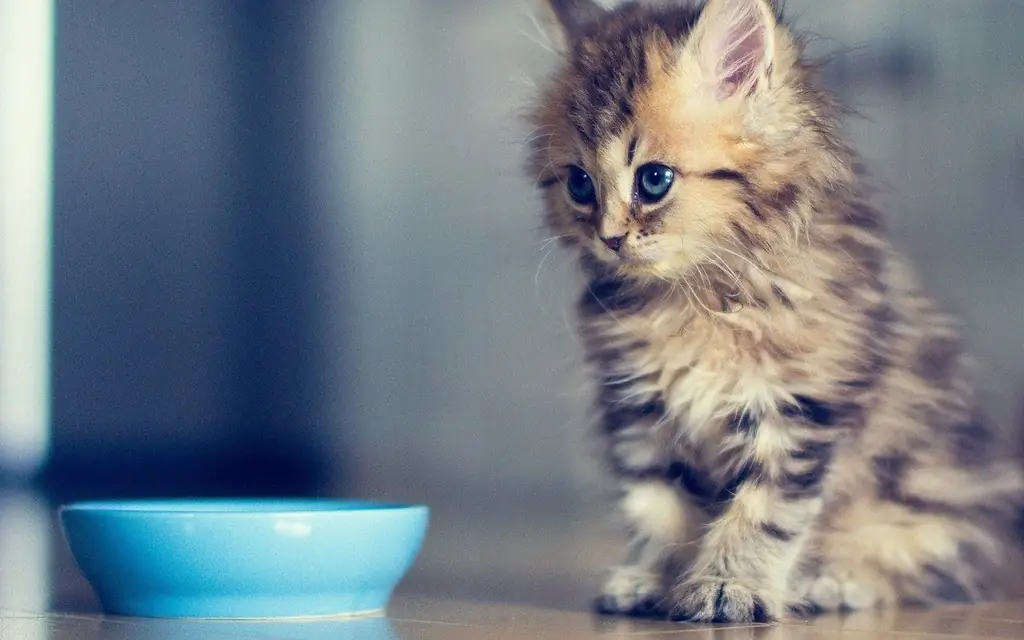
Kitten feeding rules. Veterinarian recommendations. Features for every age. Prohibited and permitted products, prepared feed. Feed reviews
Analysis Of Cat Food: Comparison Of Their Composition, From Which Dry And Wet Food Is Made, Analyzer Of Components (ash, Preservatives, Etc.)
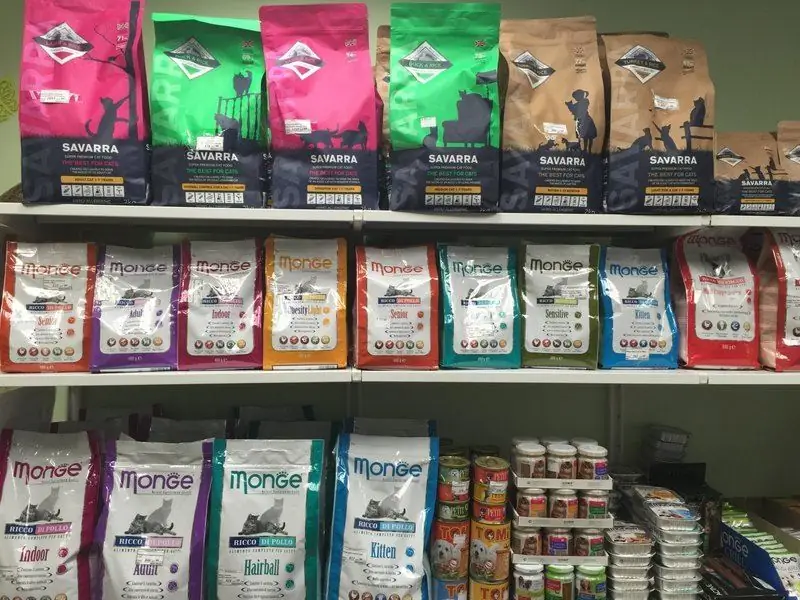
What ingredients should be present in cat food and what ingredients should be avoided. How diets differ from each other
Classes Of Food For Adult Cats And Kittens: Description Of Species And Categories, Classification By Consistency, Dry And Wet, Age And More
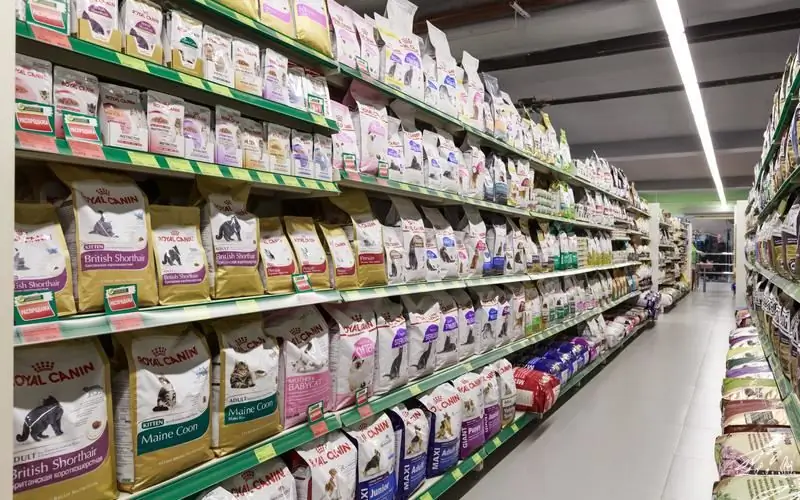
What are the ready-made cat food. How do they differ from each other. What foods should not be given to cats
Is It Possible To Feed A Kitten With Adult Food: What Is The Difference Between The Composition, Recommendations Of Veterinarians
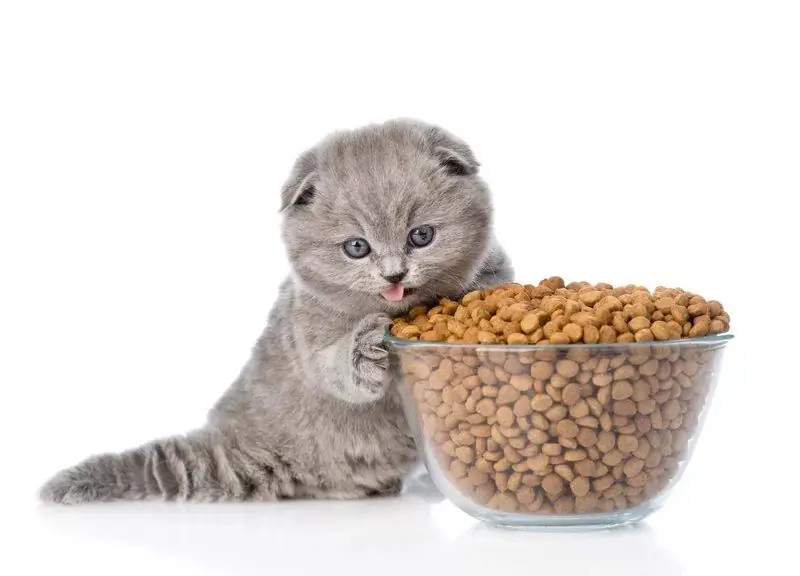
The main differences in the composition of food for kittens and for adult cats. Is it possible to give a kitten a diet marked Adult. When to transfer a pet to adult food
How To Feed A Kitten At 1 Month Without A Cat: How To Feed Newborn Cats At Home, Recommendations Of Veterinarians
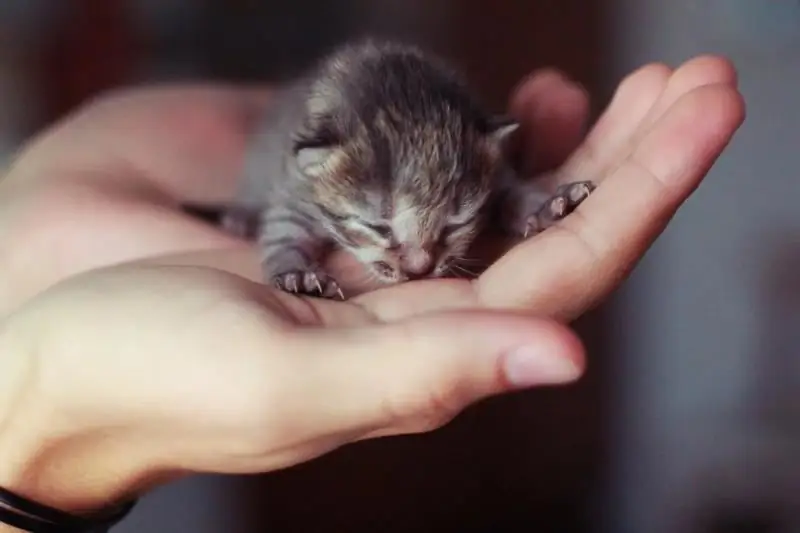
How to feed and care for a kitten without a cat. What is needed for feeding. Mix selection. Transfer to self-catering. Kitten weight gain
